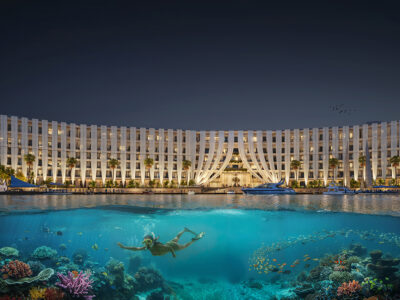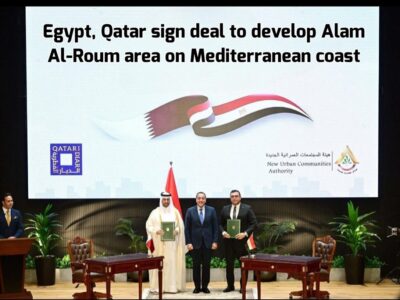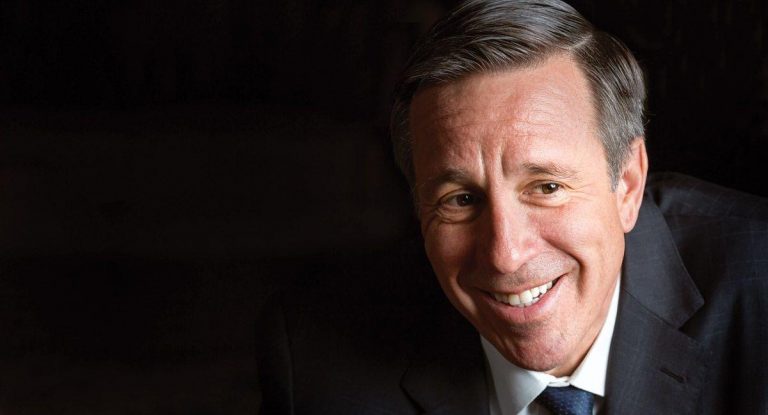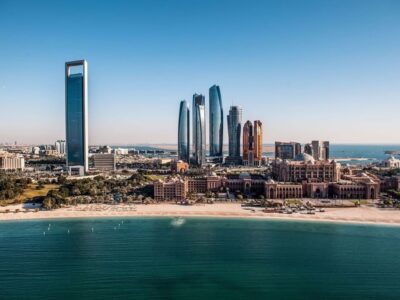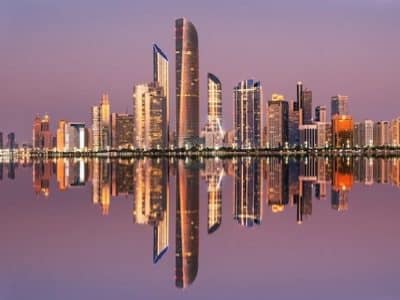When it comes to numbers, Arne Sorenson likes to talk big. Nearly a million hotel rooms signed? Check. Over 4,200 hotels? Check. A rewards scheme with over 50 million members? Check again.
“We have an old phrase at Marriott International, which is ‘success is never final’,” Sorenson says, smiling. “Nothing’s ever good enough.”
If that’s the case, the president and chief executive of one of the world’s largest hotel firms is certainly a tough guy to please, judging by Marriott’s recent results.
The Bethesda, Maryland, giant’s first-quarter profits rose by 20 percent year-on-year to $207m, helped by a powerhouse performance in overseas locations such as Mexico, the Caribbean and Egypt. For last year as a whole, the firm posted total revenues of $1.7bn, a 5 percent gain on the previous year. It is, yet again, the top-ranked hotel company on the Fortune 500 this year, and its ambitious growth plans should see it become the largest hospitality firm by rooms anywhere on the planet in the not-too-distant future.
If Sorenson, appointed as CEO three years ago and the first non-Marriott family member to hold the post, is feeling the pressure, there’s absolutely no sign of it. Last week he was named as one of America’s top 50 CEOs as judged by their own employees. In person, he is an engaging and gregarious interviewee. And at a party held later that same day at the colossal JW Marriott Marquis hotel on Sheikh Zayed Road, he seems happy to play the role of showman, donning a pair of sunglasses and posing for the local press in a pastiche of the Hollywood ‘Men in Black’ films.
Founded almost nine decades ago by John Willard Marriott in Washington, DC, the company opened its first hotel in Virginia in 1957. It launched its first international property, in Mexico, in 1969, and has since built up a dizzying array of brands. If you happen to find yourself staying at a Ritz-Carlton, Bulgari or Renaissance hotel, then you’re staying with one of Marriott’s 19 brands, which also include home-grown outfits like Moxy, Edition and the Autograph Collection. The last to come on board was Canada’s Delta Hotels and Resorts, which was purchased for $134m in April.
To the outsider, such a long list of brands might be considered bewildering, although Sorenson is quick to dismiss that suggestion. In fact, he is clearly intent on adding even more.
“Our philosophy for a long time has been that we want to have a leading brand in each distinct sector of the marketplace,” he says. “Initially that was simply by price point, but as we sit here today, we see it’s not just via price point, but other attributes as well. So we have a stack of lifestyle brands essentially segmented by price but all in the lifestyle space.
“But then you get brands like Protea, which in fairness we wouldn’t [originally] have said that we wanted another brand to be our growth platform for sub-Saharan Africa. But an M&A opportunity brought us another brand, and that gave us distribution. And the brand had great familiarity, so why would we try to rebrand that?
“And so I think as we go forward, we’ll see that our brand portfolio continues to grow.”
That rapid portfolio growth helped Marriott sign up an extra 100,000 new rooms last year alone, and it’s a yardstick that Sorenson says he plans to try and stick to.
“I would love it if we sign another 100,000 rooms this year, but we’ll see whether that comes to pass or not,” he says. “Maybe they’ll be a bit less, but I would think roughly comparable. So if you think about stacking up broadly between 50,000 and 100,000 rooms signed every year, over a decade-long period of time, the numbers get to be even larger.”
At that rate, Marriott should soon be in a position to overtake two of its major rivals, Hilton Worldwide and InterContinental Hotels Group (IHG), in terms of rooms open or in the pipeline.
All of this comes against the backdrop of a solid financial performance. Sorenson says the first-quarter figures were driven by a combination of the additional rooms mentioned above but also revenue per available room (RevPAR) for existing rooms in its portfolio rising by nearly 7 percent globally year on year during that period, and up by almost 6 percent quarter on quarter.
The US and North America in general still form the heart of Marriott’s operations, and the chief executive says that performance has been boosted by what is now six years of economic growth. He also bats away concerns over the 0.7 percent drop in US gross domestic product (GDP) in the first quarter, citing the West Coast ports strike, saying that his data tells him that both business and leisure consumers are feeling positive about the future.
“You move around the world and Europe on balance feels better now that it has done at any time in the last few years,” Sorenson continues. “We see relative strength in the UK and in Germany, and Southern Europe — so Spain and Italy, albeit off a low base. There’s relatively greater weakness in France and of course Russia is a question mark, although our first-quarter numbers in Russia were up, interestingly.”
Moving onto the main emerging markets, the chief executive says “growth and optimism has returned to India” and that sentiment is good. He also points out that despite the much-discussed slowdown in Chinese GDP is something of a sideshow when set against the government’s move towards a more consumer-led economy. “That is a benefit to travel, both local and outbound — so I think we’ll continue to see China perform quite well,” he adds.
And then there’s the Middle East and Africa, two regions which Marriott manages together. Sorenson’s first trip to the Middle East was perhaps not your typical one; as a 20-year-old, he spent a couple of months in Beirut, Damascus and Amman in what he describes as “a formative experience”, particularly as Lebanon was in the middle of a civil war.
“I remember being in movie theatres where people would shoot their pistols into the ceiling,” he smiles. “Everybody had guns — there was gunfire every night. But the people in Lebanon were amazingly welcoming, and you could get a sense of the historic charm of that place, and the cultural complexities. As my first experience of the Middle East, it was transformative.”
The region — in particular, the Gulf — has changed hugely since Sorenson’s first visit, and today it’s one of Marriott’s fastest-growing areas. The firm has 164 hotels open, with about 80 in the pipeline, adding up to just over 240 properties by 2020. Marriott has 25,000 rooms open right now, with about 15,000 signed up. But Sorenson says that’s not the end of the story, saying that the company is also constantly working on rolling out new deals.
In particular, the UAE, Saudi Arabia and Egypt have posted recent strong performances, helped by new openings and more visitors travelling, especially to Egypt. In Africa, where the $200m 120-hotel deal to buy Protea last year saw Marriott jump instantly to become the continent’s biggest operator by rooms from eighth place, Sorenson says that he is seeing good data from Nigeria and sub-Saharan Africa as a whole.
When it comes to Dubai, the chief executive says he is unfazed by signs of a slowdown in the local hospitality sector. While the city is targeting 20 million visitors by 2020, the year in which it will host the World Expo, it is also facing a hefty build-up in supply. Last year, 46 properties opened, and a further 21,100 rooms are expected to join the 93,000 odd currently on the market by the end of 2017, according to JLL. That has resulted in a slightly decline in occupancy and average revenue per room.
“It’s not just one of the biggest destinations but one of the highest-rated hotel markets in the world,” says Sorenson. “While this quarter or this year may be very modest — or even negative, certainly the first quarter was a little bit negative in Dubai — what you see is this demand continuing to build.
“When you add the supply growth and the decline in Russian travel that may have an impact — and the more supply, the more you have an impact on rates — but over time, I think the supply will be easily absorbed and we’ll see demand come back into the market.”
Perhaps the biggest news in the hotel industry this year has been an announcement in April from Starwood Hotels & Resorts Worldwide that it was “exploring strategic alternatives”, sparking frantic rumour of a tie-up with another industry giant like IHG or Wyndham. Such a move would create a formidable competitor for the likes of Marriott, but the consensus from industry analysts is that the hotel industry is ripe for consolidation.
Sorenson doesn’t speculate on Marriott’s involvement or otherwise in any future major tie-up, but his thoughts on megamergers show the complexities of any such deal being completed. There are obvious advantages to size, he points out, although there are also problems associated with this particular sector that could be difficult to surmount.
“It really is an unprecedented space,” he says. “What do you do with two different rewards programmes? You can look at the airlines and say ‘well, they’ve done it’, but one profound difference is that the airlines own all their planes.
“In the hotel space, every one of our hotels is owned by a third party, like a real estate investor, and they have a very keen interest in the decisions we would make on our rewards programme, our portfolio of brands and whether we would merge with someone else. That all has to be factored in. So whether something would happen, who knows?”
For now, it seems, Marriott will focus on smaller acquisitions like the Delta and Protea deals. As a listed company, Sorenson is reluctant to give specifics, but says that, as a rule of thumb, Marriott is likely to spend “some few hundreds of millions of dollars a year”. As a caveat, he adds that for smaller deals, “it’s almost impossible to predict what the ultimate spending will be because these things come up in their own time”.
The chief executive is also reluctant to speculate on a potential deal in the Middle East, pointing out that while there are “some really great companies” in the region, Marriott will “wait and see”.
And with that, plus a firm handshake, Sorenson is off to continue with what looks like a punishing schedule of interviews, meetings and speeches during his brief stay in Dubai. But he’s still smiling — perhaps unsurprisingly, given the story he has to tell.

